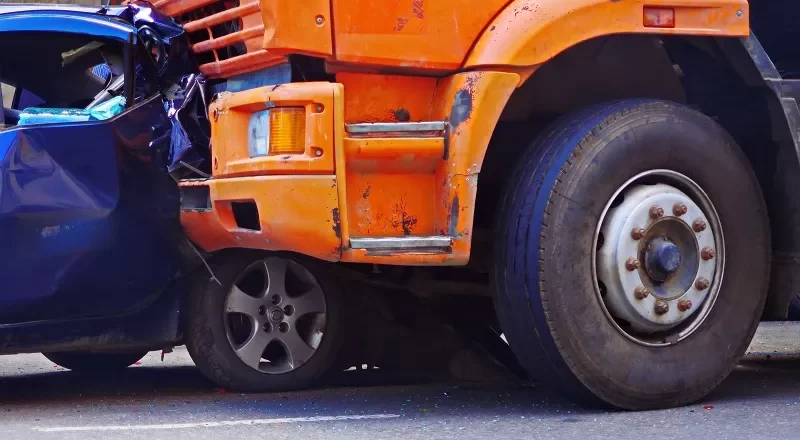Teen Driving Awareness – Safety Tips for New Teen Drivers & Parents

Did you know that the number one cause of preventable death in teens is car accidents? According to the CDC, approximately 2,800 teenagers ages 13 to 19 were killed and 227,000 were injured in motor vehicle accidents in 2020 in the United States alone (Source). This scary statistic means that around eight teens die, and hundreds more are injured due to car crashes every single day!
So, what’s the best way to protect our teen drivers from being involved in a potentially deadly car accident?
Tips for Parents & Parental Figures
Setting a good example and proactively helping teen drivers build safe driving habits is the best protection we as parents can grant them. For instance, providing our children with the following opportunities will help them develop the skills, experience, and understanding needed to act safely and responsibly while on the road:
- Education, such as Driver’s Ed, defensive driving classes, car maintenance courses, safety videos, and other helpful instructions.
- Demonstration of safe driving practices by parental figures, siblings, and other role models.
- Discussion of safe driving (and not-so-safe driving) practices and how to make good decisions while on the road.
- Practice regularly and in safe driving conditions, until the driver becomes more comfortable and confident in their driving skills.
Tips for Teen Drivers
Driving can be intimidating and scary for teen drivers, especially as they venture out on their own. It can also take a lot of time and practice to fully establish safe habits, especially as road and traffic conditions change. Until these habits are in place, new drivers can easily forget or overlook certain safety procedures if not practiced regularly, like checking their mirrors or putting on their seatbelts.
So, to help them stay safe and remember the “important stuff” before getting behind the wheel, we’ve compiled this comprehensive Car Safety Checklist. (Hint: the extra important stuff is in bold!)
Before Getting In Your Car:
- DO NOT drink, smoke, or do drugs and drive! Avoid ALL substances that can affect your driving (marijuana, alcohol, medications that cause drowsiness or affect decision-making, etc.).
- Avoid driving while sleep-deprived or tired.
- Avoid driving at night or when visibility is low.
- Check the tires, tire tread, and air pressure – don’t drive with low or flat tires.
- Clear any snow, ice, or other debris on your car that obstructs your view.
- Check the windows and windshield – wash them inside and out if they’re not clean and clear.
- Check the windshield wipers and washer fluid.
- Check for leaks.
- Check the fluids (engine oil, brake fluid, and coolant) – top off any fluids if they’re low.
- Check the battery.
Schedule and keep up with regular maintenance (oil changes, tire rotations, filter replacements, and brake checks).
Before Starting Your Car:
- ALWAYS put on your seatbelt! Make sure all passengers are wearing their seatbelts, too.
- Put away, turn off, or remove all distractions – cell phones, food/drink, loud music, etc.
- Limit the number of passengers – avoid driving with rowdy or distracting passengers.
- Check and adjust the mirrors.
- Check the headlights, tail lights, and turn signals.
- Turn on the windshield defoggers to remove any condensation.
- Adjust the seat and steering wheel position to where it’s comfortable.
- Check the dashboard for warning lights or notifications – don’t leave before knowing what’s wrong.
- Set up your GPS and start navigation.
- Set up and sync the hands-free Bluetooth system to your phone.
- Choose and play your radio station, playlist, podcast, etc.
- Secure all your items.
- Plan to start/warm up your car early if the temperatures are around or below freezing.
While Driving Your Car:
- NEVER text and drive!
- Always pay attention to your surroundings.
- Always have two hands on the wheel at 10 and 2.
- Always use your turn signals and check your mirrors.
- Obey all traffic laws and speed limits – don’t speed!
- Keep a safe distance between you and other cars – the faster you go, the more distance you need.
- Come to a full stop at stop signs and red lights.
- Don’t try to “beat” yellow lights.
- Pull over if you’re tired or feeling unwell.
- Pull over if you’re having trouble seeing the road, other cars, or other hazards.
- Pull over to use your phone, or use the car’s hands-free Bluetooth system to make/take phone calls (only if necessary).
Injured in a Missouri Car Accident? Text “HURT” to 22222 or call (816) 400-4878 today for a free personal injury consultation with our top-rated legal team.
Follow Us on Facebook, Instagram, and TikTok for more helpful injury law content!






